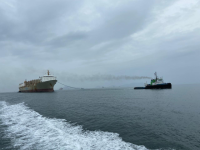Thanks, Ants and Daydreamer for your photos of Halobates. I owe you both a CBC Dark and Stormy. As can be seen, this bug has a pretty sweet design that sailors can appreciate: light, strong, fast, stable, maneuverable, and ocean worthy. Developed over 45 million years.
View attachment 5394
And communicative. Ants, the concentric ripples you photographed are produced by male halobates to attract females. Think Match.Bug.
Halobates have their own PFD's, which is really a water repellent envelope of small hairs that trap air. Halobates do not like to be submerged, but can survive 16 hours underwater if need be. On the surface, oceanic Halobates have a UV reflective coating which protects them from sunburn.
Halobates can jump up to 6" high to avoid predators from below. They have antenna for instrumentation. Their short front legs are for catching prey. The long middle legs are hinged oars, and can propel them with great speed in 3 dimensions. And the rear legs are double rudders for steering.
Note to Rob. Halobates are strongly attracted to night light. To catch one, try with a spotlight on the surface. Just beware of flying fish. I once had a large one flying fish sail into WILDFLOWER's cabin. Results were not pretty.










